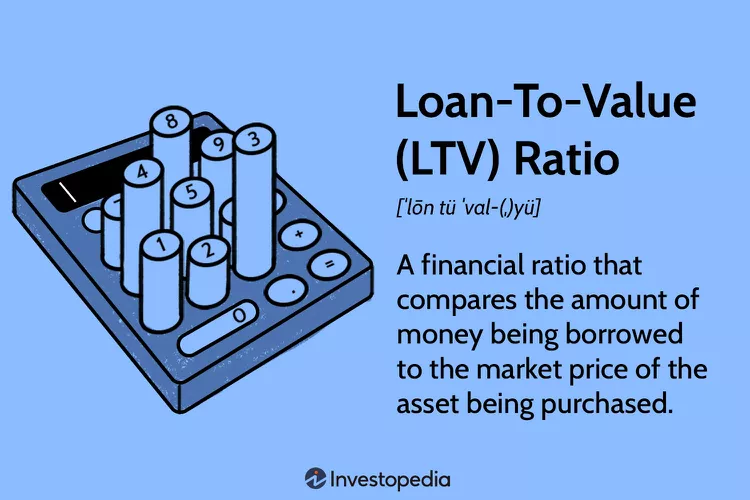
Loan-to-value (LTV) ratios are a crucial piece of the puzzle in financing. They tell you how much of a property’s value is financed by a loan and play a key role in determining risk for both lenders and borrowers. But not all loans have the same LTV limits. Knowing the maximum LTV ratios for various loan types can help borrowers make smart decisions and potentially secure better terms. Visit the site if you are looking for a reliable trading platform online.
What Does the LTV Ratio Really Mean?
In simple terms, the LTV ratio is the percentage of a property’s value that’s covered by the loan. So, if you’re buying a property worth $200,000 and take out a $150,000 loan, your LTV ratio is 75%. Higher LTVs mean the lender is financing more of the property’s value, which could spell higher risk. A lower LTV means the borrower has put more money down, reducing the lender’s risk.
LTV ratios matter because they directly influence the loan’s interest rate, repayment terms, and overall approval. Generally, a lower LTV ratio can help you secure a loan with better terms, while a higher LTV could mean higher interest rates or stricter repayment conditions. Different loans come with different LTV limits, so it’s worth knowing where you stand with each type.
Conventional Mortgages: LTV and the Standard 80%
For many homebuyers, conventional mortgages are the most familiar. These loans, often issued by private lenders, typically max out at an 80% LTV ratio. In other words, lenders are usually willing to loan up to 80% of the property’s value. This 80% rule helps protect lenders by ensuring the borrower has “skin in the game” with a 20% down payment.
An 80% LTV ratio for conventional loans means you’ll need to come up with that 20% upfront. This rule helps reduce the chance of a borrower defaulting, as they’ve invested a fair amount of their own money. However, if you’re unable to provide a full 20% down payment, you may still qualify for a higher LTV, but you’ll likely need to pay for private mortgage insurance (PMI). PMI serves as extra protection for lenders, allowing them to take on a higher LTV while minimizing risk. Though PMI adds to the monthly payment, it can be a helpful option if coming up with a full 20% down payment isn’t possible.
FHA Loans: More Flexibility with Higher LTV Ratios
Federal Housing Administration (FHA) loans are a popular choice for first-time homebuyers and those with limited funds for a down payment. With an FHA loan, you can often secure a mortgage with an LTV ratio as high as 96.5%, meaning you’ll only need a 3.5% down payment. The government backs these loans, giving lenders more confidence and allowing them to offer higher LTVs.
FHA loans’ higher LTV ratios can be a real game-changer for many buyers, especially those who haven’t yet saved a large down payment. The trade-off is that FHA loans require mortgage insurance premiums, which help cover the lender in case of default.
Although the insurance premiums add to your monthly costs, they open doors for people who otherwise wouldn’t be able to buy a home. With this higher LTV ratio, FHA loans provide an alternative route for homeownership, especially for buyers who need a bit more financial flexibility.
VA Loans: No Down Payment Required for Qualified Borrowers
For eligible veterans, service members, and certain surviving spouses, VA loans provide a unique path to homeownership. One of the standout features of VA loans is that they allow up to 100% LTV, meaning no down payment is required. Backed by the Department of Veterans Affairs, these loans are designed to reward those who have served by making homeownership more accessible.
Since VA loans don’t require a down payment, they effectively offer a 100% LTV ratio. However, this doesn’t mean they’re risk-free. To offset the risk of a high LTV, VA loans come with a funding fee, which helps maintain the VA loan program and ensure it’s available for future veterans. This fee can be financed into the loan, reducing the upfront cost for the borrower.
While the 100% LTV on a VA loan is generous, it’s still wise for borrowers to weigh their options. With no down payment, borrowers start with no equity, meaning if property values dip, they could owe more than the property is worth. Consulting a financial expert can help veterans make the best use of this powerful benefit while considering potential long-term effects.
Conclusion
Selecting the right loan and understanding its LTV ratio can make a big difference in the affordability of a property. From conventional loans with an 80% LTV standard to FHA, VA, and USDA options with higher LTV possibilities, there are paths for various financial situations and goals. However, LTV ratios aren’t one-size-fits-all, and the right choice depends on your financial picture, down payment ability, and comfort with long-term costs.






